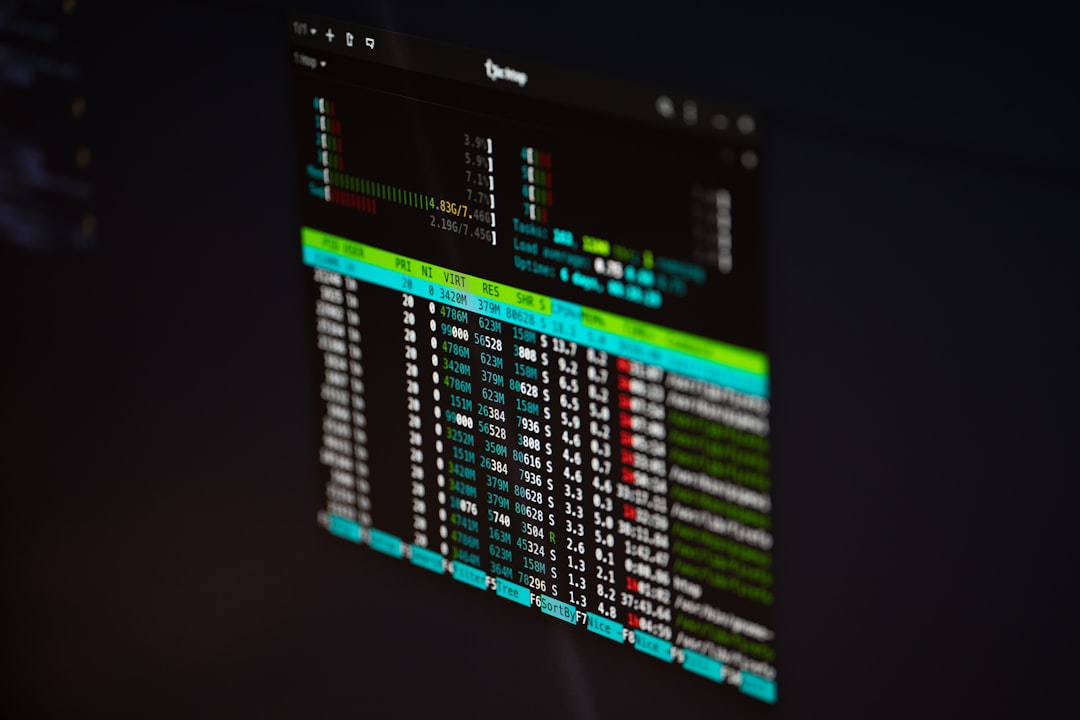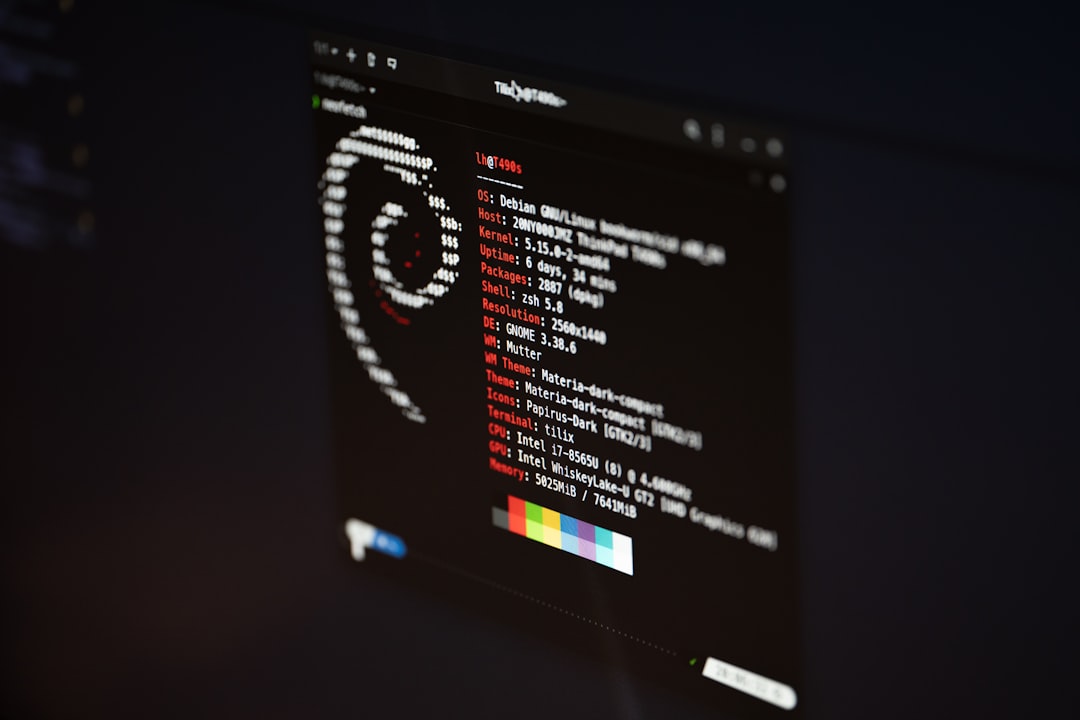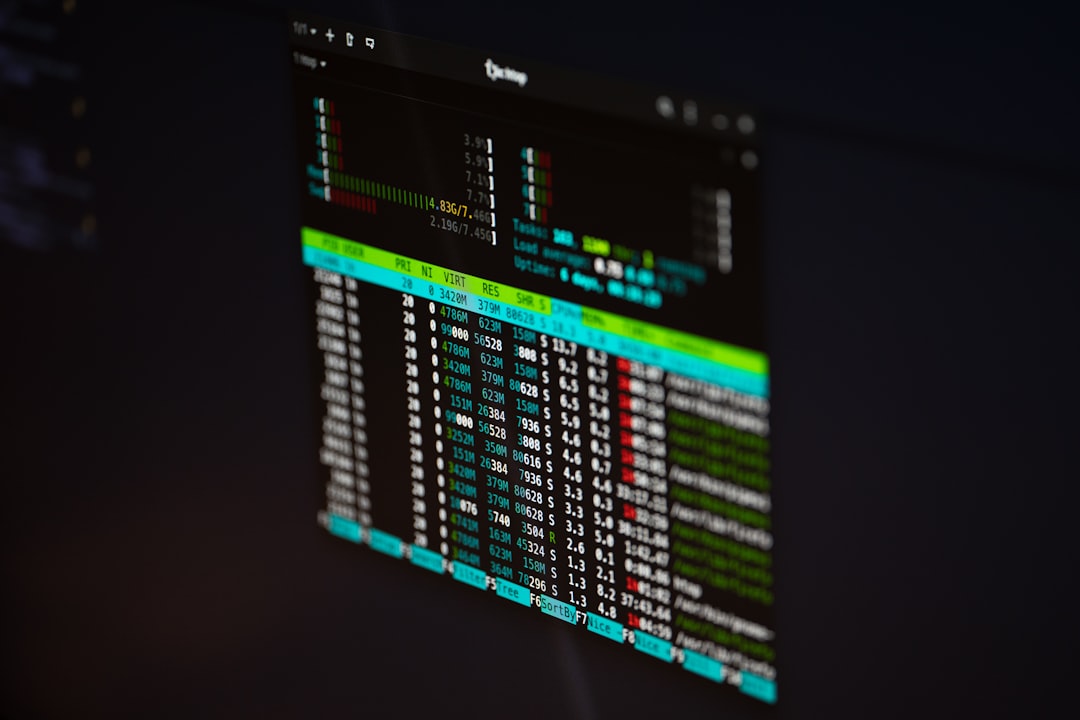Efficient User Home Directory Migration A Step-by-Step Guide for Linux Systems
Efficient User Home Directory Migration A Step-by-Step Guide for Linux Systems - Understanding the Need for Home Directory Migration
Understanding why home directory migration is necessary is vital for keeping Linux systems stable and secure. A properly planned migration can make managing users simpler and let organizations leverage new features and stronger security safeguards. Technology constantly changes, and updating home directories regularly can improve defenses against new cyber threats, keeping user data safe. Before migrating, carefully examining and listing the current directories can help uncover dependencies, making the change smoother and minimizing potential disruptions. A well-thought-out migration plan enhances the overall robustness and reliability of the directory service, ensuring the long-term health of the system.
When dealing with ever-increasing user data, file systems can become bogged down, leading to sluggish system performance. This points towards the need to migrate home directories to solutions that can handle the load better and maintain efficiency.
Traditional storage approaches often employed in Linux environments, while functional, might not be the most flexible or scalable. Moving to more advanced options can address these limitations, ensuring that the system can grow with its users.
Security is often a driving factor for migrations. Older systems might lack the robust encryption features found in modern environments, posing a risk to sensitive data that’s stored and transferred.
A significant concern when moving user home directories is managing permissions correctly. Errors in this phase could lead to unintended data access or even loss, emphasizing the importance of a careful and well-defined strategy.
Understanding user behaviour is fundamental to a successful migration. The process can unearth unexpected usage patterns that could influence future design decisions and system choices.
Automating as much of the migration as possible can reduce time and errors. Some documented examples suggest that automation can cut the migration time by as much as 70% compared to manual methods.
The complexities of file structures in home directories mean that if configurations aren't carefully replicated, the system might not work as expected after migration. This underlines the need for thorough testing.
Often overlooked is user training. Without adequate preparation and communication, user confusion and system downtime can follow the migration.
During the migration phase, temporary files and backups can significantly increase disk space usage. This can unexpectedly trigger storage quota issues unless anticipated and addressed ahead of time.
Post-migration audits are often overlooked, but crucial. There's evidence that a significant portion of organizations neglect these, leaving open the possibility of hidden issues that can impact long-term system health and user satisfaction.
Efficient User Home Directory Migration A Step-by-Step Guide for Linux Systems - Preparing Your Linux System for the Migration Process
Before migrating user home directories on a Linux system, you need to get your system ready. This involves a few important tasks that will help the process run smoothly.
First, you need to have a good understanding of what software and configurations will be needed on the new system, keeping in mind that these requirements might change. Data transfers during a migration can be slow, especially if you have a lot of data, so it’s best to get this started early. It's essential to prepare for the new system's installation. This means getting the new Linux distribution ISO file and creating a bootable USB drive or other media to install it.
Once the new OS is installed, you'll need to get it ready to support the users and data that are moving over. This includes setting up an SSH connection so you can install any needed packages and dependencies. Users will need their jobs, mail, and configurations moved correctly to the new system. You'll also need to plan for how to move user data, making sure nothing gets lost or corrupted during the transfer. These steps are fundamental to a successful migration.
When preparing a Linux system for a user home directory migration, it's crucial to consider various aspects that can impact the process and its success. For instance, newer Linux distributions offer features like distributed file systems such as Ceph or GlusterFS. These can potentially offer greater scalability and high availability, minimizing downtime during the move. However, careful planning is essential to realize these benefits, particularly for large datasets.
One easy-to-overlook detail is user space quotas. Implementing them beforehand can help avoid potential storage issues. Without them, users may unintentionally consume excessive resources, leading to a performance degradation and adding another layer of complexity to the migration. You might think this is obvious, but the types of filesystems matter too. ext4 and XFS behave differently with metadata and file locking, so this needs to be accounted for to avoid losing data.
We've all used backup tools, but technologies like LVM snapshots offer an alternative approach to protecting data during a migration. While backups are reliable, snapshots provide near-instantaneous copies, potentially offering a better fallback option and minimizing performance disruption.
It's easy for configurations to drift during migrations if they aren't documented carefully. This can cause unpredictable behavior and create extra work when debugging issues after the migration. Writing scripts in languages like Bash or Python can be a useful method to automate several tasks. Automation can reduce errors, but it's important to test scripts thoroughly to ensure they work as expected.
Access control lists (ACLs) allow for more nuanced access management compared to traditional permissions. If you don't think about this beforehand, it can introduce security holes and potentially non-compliance issues. It's helpful to examine user behaviors before migration to understand how their usage might affect the design of home directory structures. This kind of planning is useful for identifying potential bottlenecks before you migrate to a production environment.
Monitoring system performance metrics during the migration process can reveal potential problems such as I/O bottlenecks or CPU usage issues. It’s a good practice to establish baseline metrics beforehand to have a more complete picture of what constitutes success. Finally, temporary files often generated during migrations can quickly fill up disks. Developing a strategy for automatically removing these files can prevent unexpected issues during the process.
Efficient User Home Directory Migration A Step-by-Step Guide for Linux Systems - Backing Up User Data Before Making Changes
Prior to making any changes to user home directories on Linux systems, it's absolutely critical to create a reliable backup of all user data. This step serves as a safety net against any accidental data loss that might occur during the migration process. Proper planning is key, and you should use tools like `rsync` to create incremental backups which verify that data is copied accurately. It is highly recommended that you conduct a trial migration in a test environment to identify any issues without jeopardizing your live system. Having a robust backup plan in place means you can easily recover if something goes wrong, ensuring both your user data and the system itself remains intact throughout the migration.
Before we start moving user home directories, it's absolutely critical to create a reliable backup of all the user data. Failing to do this could lead to a significant loss of information, and given the scale of data that some users generate, this could be catastrophic. If we were to lose data due to a mistake, it could disrupt workflows and potentially incur major business losses. This isn't just about data loss though, it also helps ensure business continuity.
User home directory migration, like any major system change, may require some preliminary planning. One of the most critical factors is ensuring the destination system has sufficient disk space available for the data transfer. Running out of space mid-migration is a common problem that can lead to wasted time and resources.
When we're migrating directories, it's not just about the files themselves, we have to carefully consider ownership and file permissions. If these aren't handled correctly, we could end up with unexpected problems such as users being unable to access their data, or worse, having incorrect permissions that could cause security issues. The migration method must account for this and do it correctly.
Thankfully, command-line tools like `rsync` are well-suited for transferring files. One of the big benefits of using tools like this is that we can do incremental backups which allows us to transfer only changes which can significantly reduce the amount of time it takes. Plus, tools like `rsync` can verify data integrity, which helps ensure that we aren't moving corrupted data to the new system.
If we are migrating user data across many systems, it's wise to test our migration procedure in a development environment before we attempt it in production. Finding issues and bugs in a non-production setting prevents larger-scale issues from affecting end-users. This can save headaches later.
Throughout the migration, it's essential to document every step. We should consider keeping a running record of user accounts that are migrated and their final destinations. This documentation can be crucial when troubleshooting or simply recalling what's been done if there's a long delay between stages of the process.
Once the migration is completed, we need to perform a thorough verification of all the user data to make sure that everything has been moved correctly and without any errors. We have to carefully check for file corruption or issues with file permissions that might impact user access.
Scheduling the migration during off-peak hours, perhaps after-hours or during a weekend can help minimize the impact on users. Users are less likely to be working and relying on these directories, thereby limiting the potential negative impacts.
If something goes wrong during the migration, it's important to have a solid recovery plan in place. This recovery plan should describe procedures for restoring user data from the backups we made earlier. It's wise to also practice this occasionally so that we don't forget how to do it when it's under pressure.
To reinforce security and maintain user privacy, the post-migration process should ensure that best practices for home directory permissions are in place. This final step safeguards against unauthorized access to user data, so it's worth taking the time to do this properly. This could potentially include tools such as auditing or regular log inspections to further ensure that all is well.
Efficient User Home Directory Migration A Step-by-Step Guide for Linux Systems - Using the usermod Command to Change Home Directories
The `usermod` command offers a convenient way to modify a user's home directory on Linux systems. To change the home directory, simply use the command `sudo usermod -d NEW_HOMEDIR USERNAME`, where you replace `NEW_HOMEDIR` with the absolute path of the new home directory and `USERNAME` with the user's account name. If you wish to move the user's existing files from the old home directory to the new one, include the `-m` option in the command. This creates a streamlined migration process. However, remember that the user must be logged out before changing the home directory, or issues might arise.
After using `usermod`, it's a good idea to check the file permissions within the new directory. This ensures that the user retains proper access to their files and folders. Neglecting this step could lead to confusion and errors down the line. While the graphical user interface might provide a more user-friendly alternative for altering home directories, the command-line approach using `usermod` provides the level of control needed when working with automation and scripting for larger-scale directory changes.
The `usermod` command, a powerful tool for managing user accounts in Linux, offers the ability to alter a user's home directory. However, its application requires careful consideration to avoid disrupting user environments. For example, simply changing the directory without adjusting file permissions could lead to access problems as the system might retain older ownership settings. It's quite intriguing that symbolic links can provide a temporary, smoother transition for users during migrations. By creating links from the original home directory to the new one, we can allow users to continue their work without experiencing immediate disruption.
The `usermod` command uses a specific syntax, and even minor mistakes in the parameters can lead to failures. This underscores the importance of double-checking, especially when working with a large number of users. Beyond files, we need to remember that configuration files and hidden dotfiles within the home directory are critical for maintaining a user's environment after a migration. Ignoring these can cause settings to reset or create confusion for the user. When using `usermod`, changes are implemented immediately. It's wise to communicate with users beforehand to avoid confusion, especially if they experience access issues immediately after the changes are made.
Furthermore, file permissions can behave differently after a directory change, as `usermod` might not always correctly propagate Access Control Lists (ACLs). This could result in unauthorized users gaining access to sensitive data. Although changing home directories contributes to a cleaner administrative environment, many admins neglect the crucial step of a post-migration audit. This thorough check is essential to confirm that user configurations are seamlessly integrated and operational. It’s surprising that `usermod` doesn't automatically update references in scripts and applications that may point to the old directory path. This oversight can lead to application failures due to missing files.
Combining `usermod` with other tasks, such as updating user group memberships, can streamline migrations. But this complexity underlines the need for meticulously documenting each step. The effects of using `usermod` often extend beyond the initial changes. Performance benchmarking before and after a migration can provide valuable insights into system effectiveness. By establishing a quantitative baseline, we can confidently determine if the migration truly delivers the anticipated efficiency gains.
Efficient User Home Directory Migration A Step-by-Step Guide for Linux Systems - Transferring Files and Maintaining Permissions
Moving user files and keeping the correct permissions is crucial when migrating home directories on Linux. Tools like `rsync` are helpful because they transfer files quickly and also keep the original permissions and other details about the files. It's vital to double-check that the new locations have the right settings after the move. This means more than just moving the files—you need to make sure the ownership is correctly set within the new structure. Getting the permissions right during this process is essential for maintaining user trust and the overall stability of your Linux system, as mistakes here can lead to unexpected access issues or broken user workflows.
When moving user home directories, ensuring that file permissions and ownership are correctly transferred is crucial. If we don't get this right, it can lead to all sorts of issues, like users unexpectedly gaining access to files they shouldn't or, conversely, not being able to access their own data. This is because every file's ownership is associated with a unique user ID (UID) and group ID (GID). If these IDs don't match up between the source and destination systems, the files might appear to belong to the wrong users or groups, causing access problems.
Beyond basic permissions, some filesystems utilize Access Control Lists (ACLs) to implement more intricate access control. While powerful, ACLs can be a real headache during migration. If we mess up the configuration, we could inadvertently create security holes that could go unnoticed until it's too late.
Luckily, tools like `rsync` can help us preserve permissions when copying files. By using the `-a` (archive) flag, we can make sure that symbolic links, devices, attributes, and permissions are all correctly replicated. But this assumes that the target filesystem is compatible with the source. Filesystems can have wildly different ways of handling permissions, and if we're not careful, we could run into issues if, for example, we're moving data from ext4 to XFS. Their different handling of metadata and file locking can lead to surprising outcomes.
We also need to consider extended attributes (xattr), which are a way to store extra data or permissions related to a file. If these aren't handled correctly during migration, it could cause some applications to stop working correctly.
When the home directories are mounted, we need to be mindful of the mount options used, such as `noexec` or `nosuid`. These options control whether users can execute files or run setuid programs within the mounted directory. If these change during migration, we might inadvertently prevent users from running some scripts or programs, causing confusion and headaches.
SELinux, if enabled, adds another layer of complexity. Its security contexts, which govern how files interact with the system, must be preserved and mapped correctly during migration. Failure to do so could block access to files, even if traditional permissions are in place.
After the migration, verifying file permissions and ACLs is essential. Research suggests that many organizations don't do this properly, which increases the chance of security vulnerabilities or issues with users not being able to access their files as expected.
Also, we have to remember that applications often have built-in paths for home directories. If these aren't updated after a migration, the application might struggle to find the files it needs and fail to operate. Running tests in a staging environment before moving to a production setting can help us avoid issues like this. This is good practice to uncover any unexpected quirks before they impact everyone.
Efficient User Home Directory Migration A Step-by-Step Guide for Linux Systems - Verifying the Migration and Updating System Configurations
After migrating user home directories, it's crucial to verify the migration's success and adjust system settings accordingly. This means ensuring user data was properly transferred and that aspects like file permissions and ownership are correctly reflected in the new system. Oversights here can cause a range of issues, such as security vulnerabilities where users gain improper access to data or disruptions to how users work. It's also essential to review and update any service configurations tied to specific directory locations or permissions. Ignoring these can lead to unforeseen application problems. A comprehensive audit after the migration is indispensable for upholding security and maintaining user satisfaction, as it allows you to find and resolve any outstanding issues that might have popped up during the process.
Verifying the migration and updating system configurations is a critical, yet often overlooked, step in the whole process. Simply copying files with `rsync` can be deceptively simple, as a single misconfigured flag can easily lead to incomplete data transfers or inadvertently alter permissions. A thorough understanding of each `rsync` option is key to a successful transfer.
We've all seen what happens when symbolic links aren't updated. The `usermod` command, while useful, has this strange behavior of not automatically updating symbolic links that point to the old home directory. This seemingly minor issue can lead to a user's workflow getting broken or being completely unproductive if not handled during the migration.
The diverse nature of Linux filesystems makes dealing with file metadata crucial. Each type of filesystem (ext4, XFS, and others) manages metadata in different ways. This is easy to ignore but can lead to surprises if you're migrating between different types of filesystems. Applications may stop working correctly, metadata might be corrupted, or the user's files could exhibit some unexpected behavior.
When changing a user's home directory, the initial shell startup scripts (like `.bashrc` and `.profile`) might need attention. If not properly migrated, users can end up losing custom settings, which can greatly impact their experience. It's a seemingly small thing, but it's easy for these to not be copied properly.
Similar to startup scripts, a lot of configuration settings are in hidden files, the ones that start with a dot (.). While not a direct source of errors, missing or mishandled dotfiles can silently make a user's experience much harder. These contain important settings, so they should be copied or adjusted just like other files during a migration.
Automating tasks through scripts is great for time-saving and avoiding repetitive human error. However, relying solely on untested automated scripts can create security holes if the scripts are not carefully written. It's best to develop and thoroughly test scripts in a separate test environment before using them in a production setting. This mitigates the risk of accidentally introducing vulnerabilities.
Unfortunately, post-migration permission audits are often skipped. It's surprising to see how many organizations fail to conduct a comprehensive security audit after a migration, which can leave them vulnerable to unauthorized access. By skipping this step, the chances of someone gaining access to user data is far greater.
ACLs are a powerful, yet often misunderstood, security feature. Mismanaging ACLs during a migration can quickly cause issues. It is crucial to understand the effects of ACLs, both positive and negative. Failing to account for them can lead to security loopholes that could go undetected until a security audit occurs, if one ever does.
It's easy to forget about temporary files created during the process. Temporary files left unmanaged can eat up disk space fast, sometimes quickly triggering disk quota issues. Being prepared for this and planning out how to purge them automatically can prevent these problems.
Finally, during a migration, it's important to remember the human element of the whole process. It seems obvious, but if we don't keep users informed about what is going on, a simple change like moving a home directory can lead to a lot of confusion, and in the end, a negative view of the whole IT department. Keeping the users in the loop, with clear communication and reasonable expectations, is critical for keeping them productive.
More Posts from aitutorialmaker.com:
- →Streamlining Hostname Changes in Debian A Practical Guide for Enterprise Linux Administrators
- →Using Google AI to create tutorials with visual insights
- →Efficient Techniques for Finding the Minimum Value in Python Lists A 2024 Update
- →Enhancing Batch File Automation Leveraging If-Else Statements for Enterprise AI Workflows
- →Efficient Python Exploring Methods to Find Maximum Values in Lists for Enterprise AI Applications
- →Mastering R's Control Structures A Deep Dive into if, else, for, while, and repeat Statements




